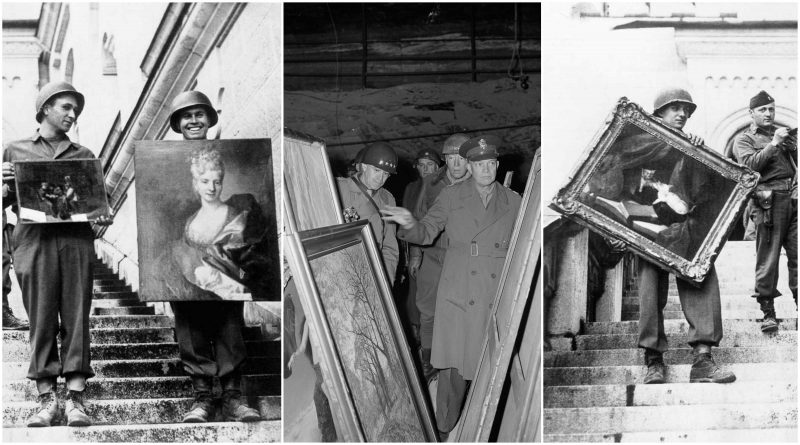Adolph Hitler was an art aficionado. He had applied to Vienna’s Academy of Fine Arts as a young man but was rejected, forever quashing his ambitions of becoming a successful artist. He soon turned to collecting art, and as Chancellor of Germany and head of the Nazi Party, Hitler took advantage of many opportunities to steal priceless works of art from the cities his troops occupied. The Nazis went so far as to remove stained-glass windows from churches.
In Paris, the President of the Reichstag Hermann Göring confiscated so much art that he needed two railroad cars to transport it all to Germany. Hitler planned to build an art complex, the Fuhrermuseum, in Linz, Austria, using art stolen from all over Europe. It would have been the largest museum in the world.
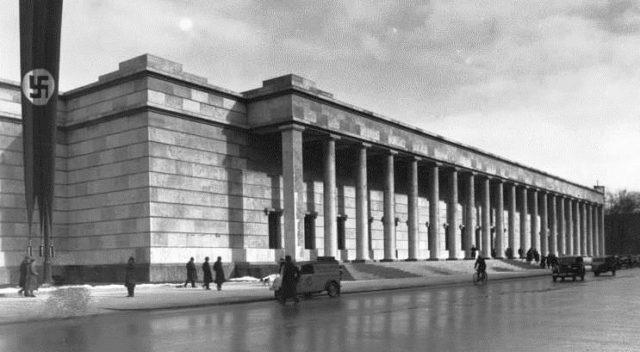
Art historians and museum leaders expressed concern and pressured the Allied forces to protect art and cultural artifacts. In response, the Allies created the Monuments, Fine Arts and Archives Program (MFAA) to protect European pieces of art from annihilation and to recover pieces that had been looted. Almost 350 men and women from 13 countries volunteered. The volunteers were not soldiers but middle-aged architects, museum curators, art scholars, artists, and historians with no military experience whatsoever.
After the hostilities were over, they spent months in search of the millions of pieces of artwork and cultural items stolen from affluent Jews, museums, universities, and places of worship. For six years after the surrender, a group of about 60 Monuments Men continued searching Europe for missing art.
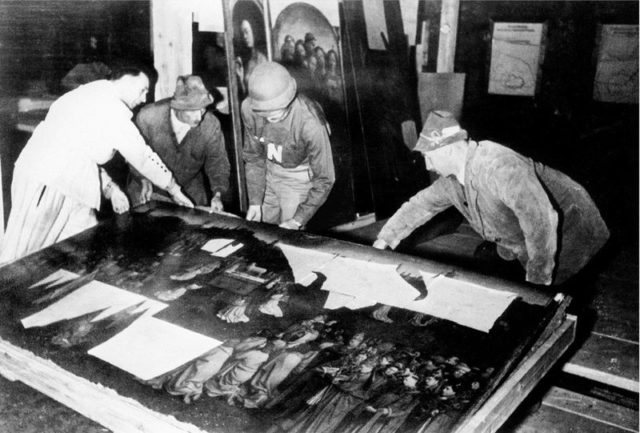
Supreme Court Justice Owen J. Roberts was in charge of the group, sometimes called the Roberts Commission, whose mission was promoting the preservation of cultural properties in areas of conflict, including the Mediterranean, European, and Far Eastern Theaters of Operation, so long as the work did not hinder military operations.
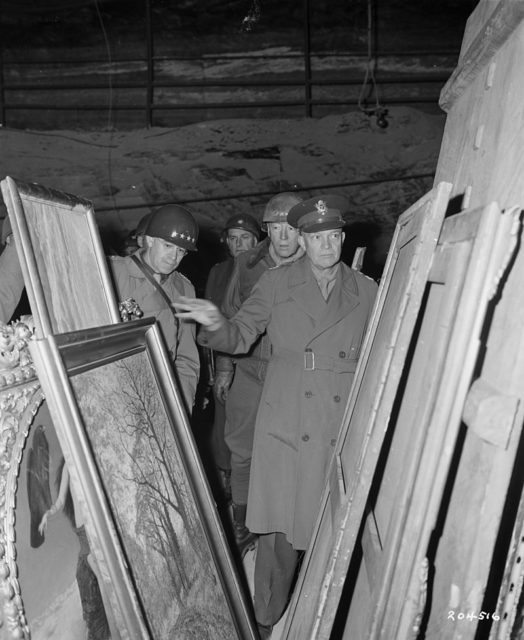
At Washington DC’s National Gallery of Art, the group created lists of missing European treasures and gave them to military units, in the hope that the pieces could be recognized and saved. When the war was over, the Roberts Commission helped the MFAA and Allied Forces return Nazi-confiscated art pieces to the original owners. In June of 1946, the State Department took over these operations.
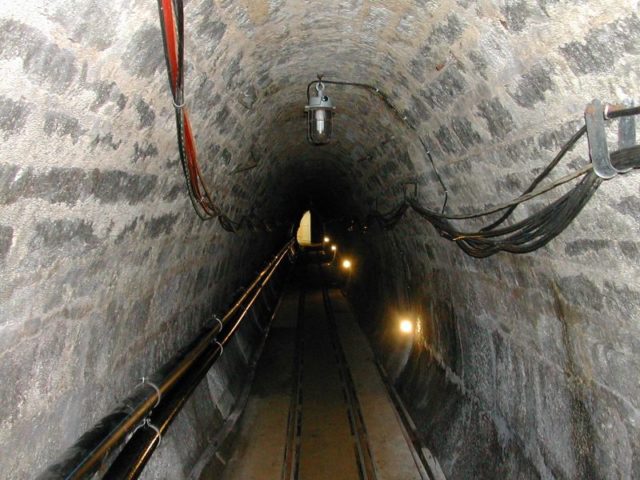
Much of the art was found deep inside an old salt mine at Altausee in the Austrian mountains. Captain Robert Posey and Pfc. Lincoln Kirstein entered the mine and found masterpieces by Jan van Eyck, Michelangelo, and the Dutch painter Johannes Vermeer. In all, 6,577 paintings, 2,300 drawings or watercolors, 954 prints, 137 pieces of sculpture, 129 pieces of arms and armor, 79 baskets of objects, 484 cases of archive objects, 78 pieces of furniture, 122 tapestries and over 1,200 cases of books, as well as stacks of gold bullion were recovered. It took eighty trucks to transport the materials to Munich.
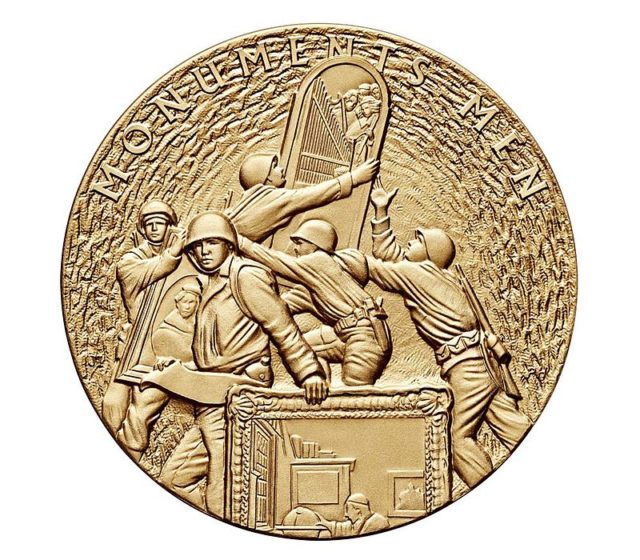
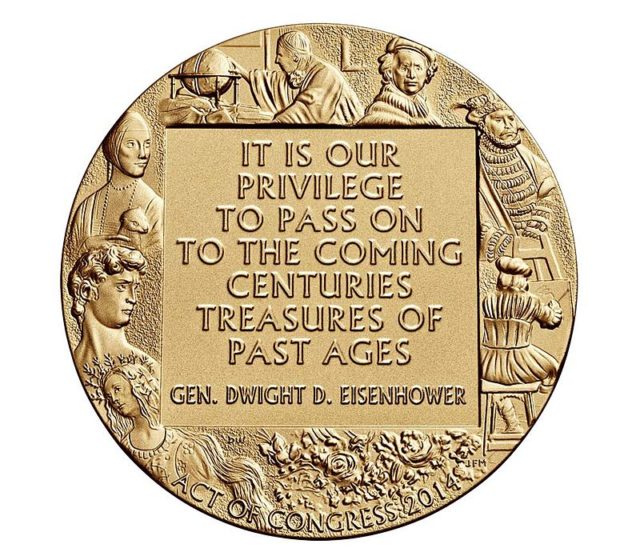
Copper mines were used, as well as old deserted castles, to store the stolen treasures. More than one thousand hiding places were found in southern Germany alone. One German castle held so many pieces of art that it took six weeks to move it all. Hitler had ordered all of the art destroyed if Germany fell to the Allies and some hiding places were burned, along with irreplaceable paintings, statuary, and textiles.
There have been several books written about the work done by the Monuments Men, including Saving Italy, The Monuments Men, and Rescuing Da Vinci by Robert Edsel, Resistance at the Museum by Rose Vallard, Beyond the Dreams of Avarice: The Hermann Goering Collection by Nancy Yeide, and The Rape of Europa by Lynn Nicholas, which was also made into a documentary directed by Bonni Cohen, Nicole Newnham, and Richard Berge. A Hollywood movie, The Monuments Men, written and directed by George Clooney and starring Clooney, John Goodman, Matt Damon, and Bill Murray was released in 2014 and based on Edsel’s book. The movie shows the enormity of all the art stolen by the Nazis in such a way that numbers on a page cannot.
By 1951, the group had rescued and returned over 5 million pieces of art. But it has not wound up its task. On June 6, 2007, The Monuments Men Foundation for the Preservation of Art began operations to continue the work of the original group and is still actively searching for stolen artifacts from the war.

In some instances, the work goes back to Germany. In December of 2016, a 16th-century tapestry sold to Hitler’s architect in 1938 was donated to the National World War II Museum in New Orleans. An American officer took it from Hitler’s Eagles Nest retreat in 1945 and kept it until his daughter donated it. Thanks to the Monuments Men Foundation, it was returned to Munich, Germany, where it will be on display at the Bavarian National Museum.
The Monuments Men Foundation is still active and still looking for the thousands of missing art pieces that have yet to be found; it welcomes the help of any kind.
